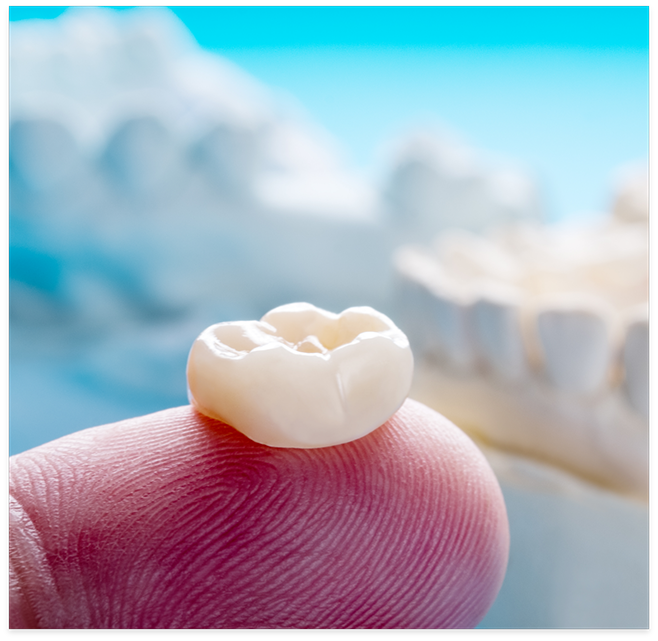Restorative Dentistry Cottonwood Heights
Rebuild Your Smile for Life
The goal of restorative dentistry from our Cottonwood Heights, UT dentist is to preserve natural teeth as much as possible. Replacing missing teeth with a dental implant, bridge, or full or partial denture helps promote dental health as well. Filling in empty spaces in the mouth can keep cavities from developing in the remaining teeth due to oddly shaped gaps that are vulnerable spots for plaque-causing bacteria to build up. Missing teeth also put extra stress on your remaining natural teeth because you don’t have as much surface area to chew with.
Why Choose White Peak Dental for Restorative Dentistry?
- Custom-Designed Solutions for Each Patient
- Durable, Natural-Looking Dental Restorations
- Friendly Dental Team That Puts Your Comfort First
Dental Crowns

All-ceramic crowns or caps offer a natural-looking solution for a broken tooth, cracked tooth, or teeth that are too badly damaged to be corrected with fillings or veneers. Incorporating bonding with all-ceramic crowns can restore both the strength and beauty of damaged teeth.
Learn More About Dental Crowns
Tooth-Colored Fillings

When treating a cavity, Dr. Hansen at White Peak Dental will remove the decayed portion of your tooth and fill it with another substance. This procedure is called a filling. There are multiple options for the material to be used in the filling, the most common of which are composite and amalgam.
A composite filling is also known as a tooth-colored filling since the material can be closely matched to the color of your teeth. Composite fillings provide good durability for small to medium cavities, and the procedure typically involves removing less enamel compared to an amalgam filling. They are also particularly well suited for treating front or highly visible teeth because of their natural look.
